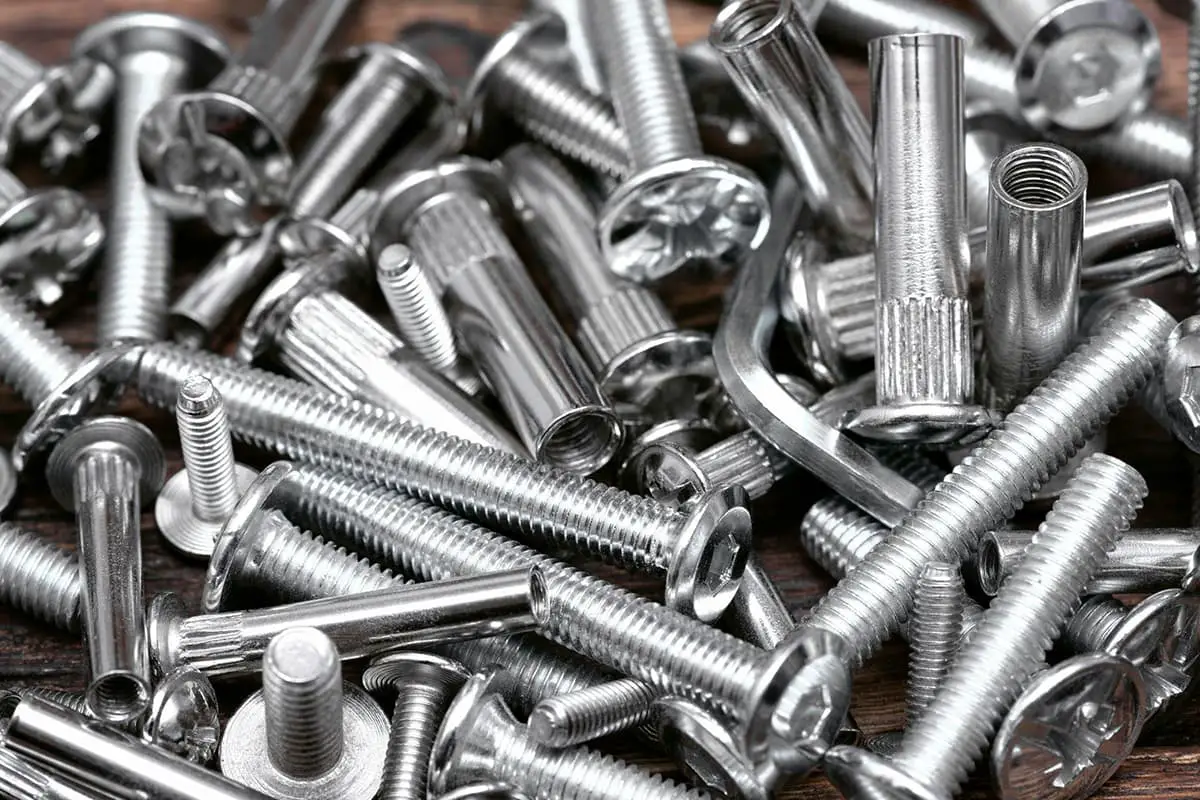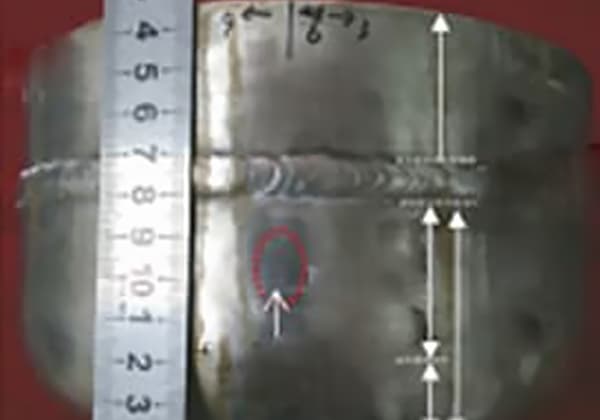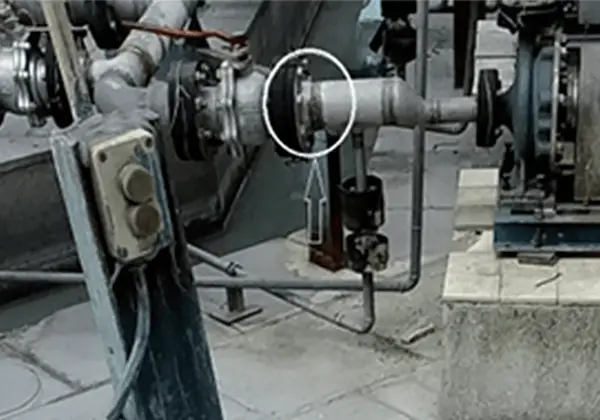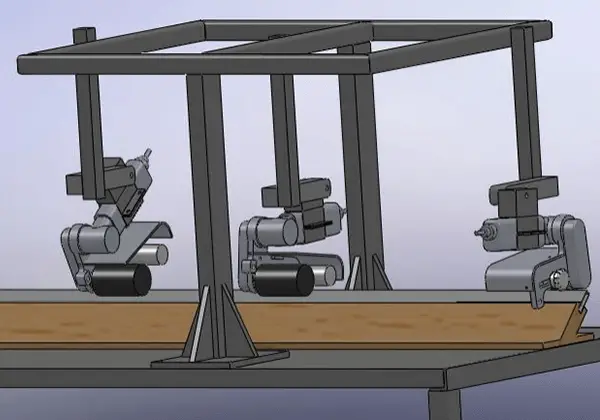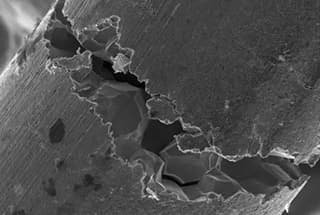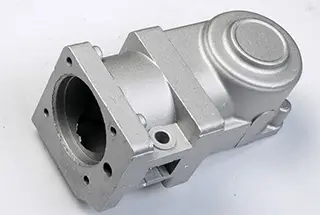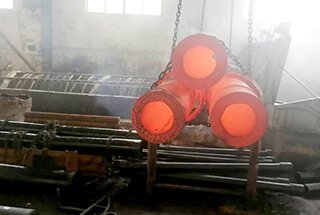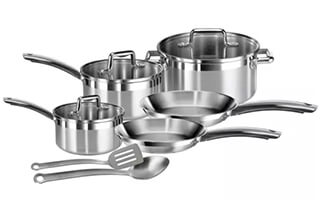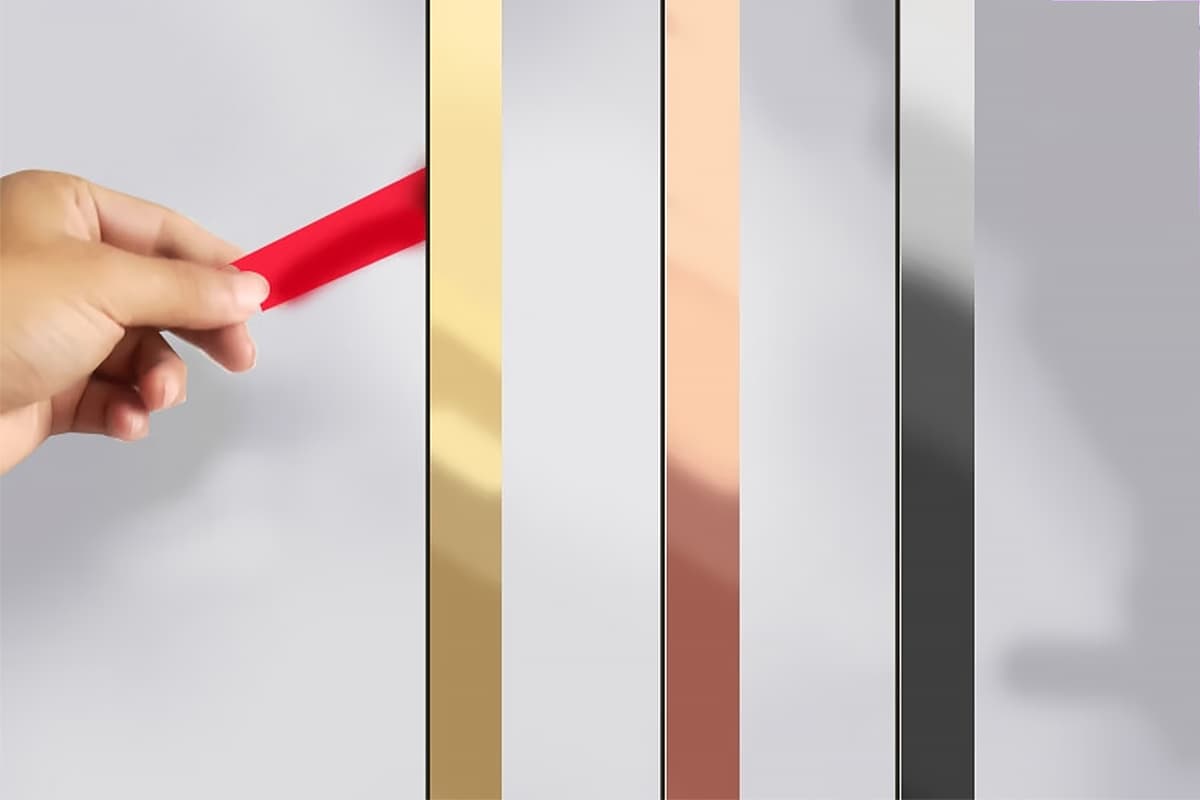
Ever wondered how the gleaming finish on stainless steel is achieved? This article dives into the meticulous process of mechanical polishing, explaining techniques, tools, and best practices. From rough polishing with rotary tools to fine polishing with diamond paste, you’ll learn the essential steps and precautions to ensure a flawless finish. Discover the impact of different materials and methods, and how they contribute to the final polished product. Gain insights to enhance your polishing skills and achieve professional-grade results.
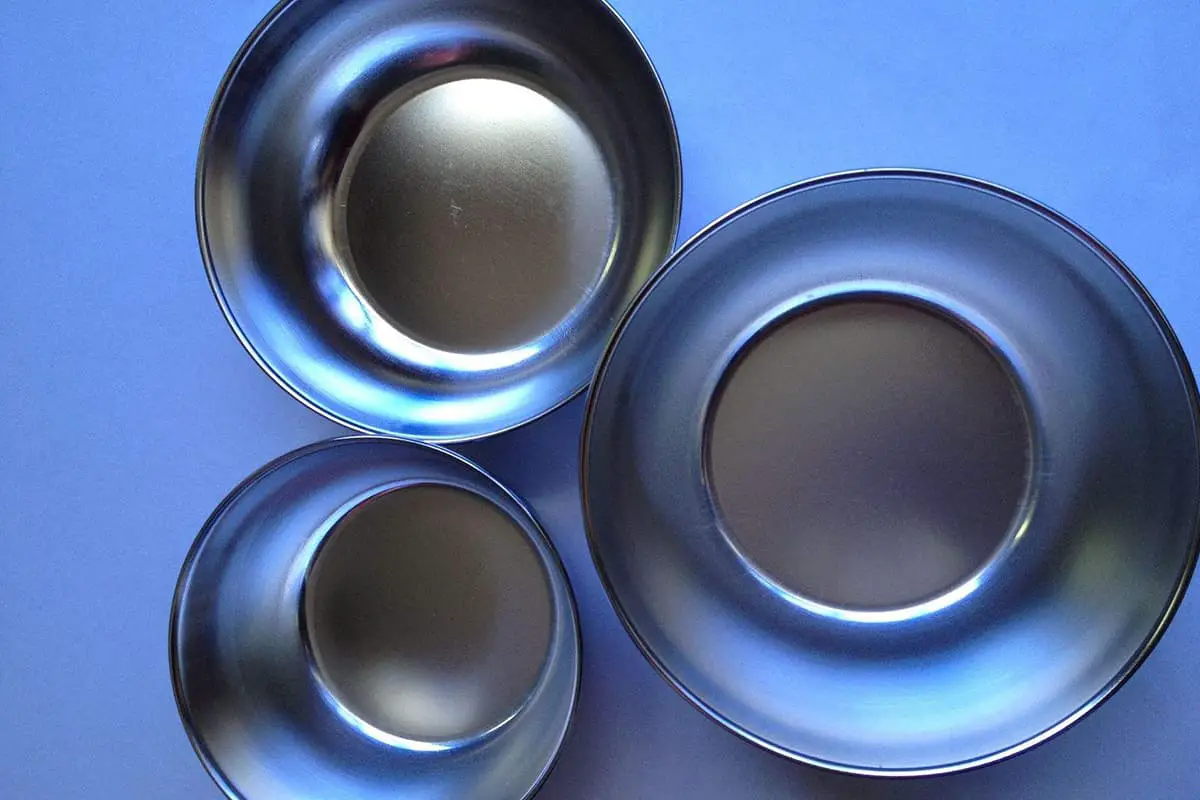
Using visual inspection, the brightness of a polished part’s surface is divided into 5 levels:
Level 1: The surface has a white oxide film, no brightness.
Level 2: Slightly bright, cannot clearly see the contour.
Level 3: Good brightness, can make out the contour.
Level 4: Surface is bright, can clearly see the contour (equivalent to the surface quality of electrochemical polishing).
Level 5: Mirror-like brightness.

Grinding with sandpaper or sanding belts during the operation essentially falls under the category of polishing and cutting, leaving very fine lines on the steel plate surface.
Troubles have been encountered when using aluminum oxide as an abrasive, partly due to pressure issues.
Any grinding components of the equipment, such as sanding belts and grinding wheels, must not be used on other non-stainless steel materials before use, as this would contaminate the stainless steel surface.
To ensure consistency of surface processing, new grinding wheels or sanding belts should first be tested on scrap materials of the same composition for comparison with similar items.
To achieve high-quality polishing results, it is crucial to have high-quality whetstones, sandpaper, diamond grinding paste, and other polishing tools and accessories.
The choice of polishing procedure depends on the surface condition after the previous processing, such as mechanical processing, electrical discharge machining, grinding, and so on.
The general process of mechanical polishing is as follows:
(1) Rough Polishing:
After milling, electrical discharge, grinding, and other processes, a rotary surface polisher or ultrasonic grinder with a speed of 35,000 – 40,000 rpm can be chosen for polishing. Common methods include using a diameter Φ 3mm, WA # 400 wheel to remove the white electrical discharge layer. This is followed by manual whetstone grinding, using bar-shaped whetstones with kerosene as a lubricant or coolant. The general order of use is #180 ~ #240 ~ #320 ~ #400 ~ #600 ~ #800 ~ #1000. Many mold manufacturers opt to start from #400 to save time.
(2) Semi-fine Polishing:
Semi-fine polishing mainly uses sandpaper and kerosene. The sandpaper numbers in order are: #400 ~ #600 ~ #800 ~ #1000 ~ #1200 ~ #1500.
In reality, #1500 sandpaper is only suitable for hardened mold steel (above 52HRC) and not for pre-hardened steel, as this may cause surface burns on the pre-hardened steel parts.
(3) Fine Polishing:
Fine polishing mainly uses diamond grinding paste. If polishing cloth wheels mixed with diamond grinding powder or paste are used for grinding, the usual grinding order is 9 μm (#1800) ~ 6 μm (#3000) ~3 μm (#8000).
The 9 μm diamond grinding paste and polishing cloth wheel can be used to remove the hair-like grinding marks left by #1200 and #1500 sandpaper. Then, felt and diamond grinding paste are used for polishing, in the order of 1 μm (#14000) ~ 1/2 μm (#60000) ~1/4 μm (#100000).
Polishing processes requiring a precision of 1 μm or above (including 1 μm) can be carried out in a clean polishing room in the mold processing workshop.
For more precise polishing, an absolutely clean space is necessary. Dust, smoke, dandruff, and saliva could potentially ruin the high-precision polished surface obtained after hours of work.
When using sandpaper for polishing, the following points should be noted:
(1) Sandpaper polishing requires the use of soft wooden or bamboo sticks. When polishing cylindrical or spherical surfaces, soft wooden sticks can better match the curvature of the surface. Harder wood, like cherry wood, is more suitable for polishing flat surfaces.
The ends of the sticks should be trimmed to conform to the shape of the steel piece in order to avoid deep scratches caused by the sharp angles of the stick.
(2) When switching to different types of sandpaper, the polishing direction should be altered by 45° to 90°. This allows for the identification of stripe shadows left by the previous sandpaper.
Before changing to a different type of sandpaper, the polished surface must be carefully wiped with a cleaning solution such as alcohol using a 100% pure cotton ball. Even a tiny grain of sand left on the surface can ruin the subsequent polishing work.
This cleaning process is equally important when transitioning from sandpaper to diamond polishing paste. All particles and kerosene must be completely cleaned before continuing with the polishing.
(3) To avoid scratching and scorching the workpiece surface, special care is required when using #1200 and #1500 sandpaper.
Therefore, it is necessary to apply a light load and use a two-step polishing method. Each type of sandpaper should be used for polishing twice in two different directions, rotating 45° to 90° between each direction.
During diamond grinding and polishing, the following should be noted:
(1) This type of polishing must be done under light pressure, especially when polishing pre-hardened steel pieces and using fine grinding paste. The common load for #8000 grinding paste is 100~200g/cm2, but maintaining this load is difficult.
To make this easier, a thin and narrow handle can be made on the wooden stick, for example, adding a copper sheet; or part of the bamboo stick can be cut off to make it softer. This can help control polishing pressure to ensure that the mold surface pressure is not too high.
(2) When using diamond grinding for polishing, not only must the work surface be clean, but the worker’s hands must also be thoroughly cleaned.
(3) Each polishing session should not be too long; the shorter the time, the better the effect. If the polishing process is too long, it will cause “orange peel” and “pitting.
(4) To achieve high-quality polishing results, polishing methods and tools that easily generate heat should be avoided. For example, the heat generated by a polishing wheel can easily cause “orange peel”.
(5) When the polishing process is stopped, it is very important to ensure the workpiece surface is clean and carefully remove all abrasives and lubricants. Afterwards, a layer of mold rust preventative should be sprayed on the surface.
Since mechanical polishing is mainly done manually, polishing technique is currently the main factor affecting polishing quality.
Other factors include the mold material, surface condition before polishing, and heat treatment process.
High-quality steel is a prerequisite for good polishing quality. If the steel surface has uneven hardness or differences in characteristics, polishing will often be difficult. Various impurities and pores in the steel are also not conducive to polishing.

An increase in hardness makes grinding more difficult, but reduces the roughness after polishing. Due to the increase in hardness, the time required for polishing to achieve a lower roughness correspondingly increases.
Simultaneously, an increase in hardness reduces the likelihood of over-polishing.
The surface layer of steel may be damaged due to heat, internal stress, or other factors during the cutting and machining process, and inappropriate cutting parameters can affect the polishing effect.
The surface after electrical discharge machining (EDM) is harder to grind than the surface after ordinary machining or heat treatment, so precise EDM trimming should be done before the end of EDM, otherwise, a hardened thin layer will form on the surface.
If the choice for EDM precision trimming is incorrect, the depth of the heat-affected layer can reach up to 0.4mm. The hardness of the hardened thin layer is higher than the base hardness and must be removed.
Therefore, it is best to add a coarse grinding process to completely remove the damaged surface layer, create a uniformly rough metal surface, and provide a good foundation for polishing.
Shot peening involves hurling small steel or iron balls at a high speed to strike the part surface, which can remove the oxide layer on the part surface.
Simultaneously, the high-speed impact of the steel or iron balls causes lattice distortion on the part surface, increasing the surface hardness. This is a method of cleaning the part surface and is often used for cleaning castings or strengthening the part surface.
Shot peening is generally used for regular shapes, where several nozzles work together from all directions to achieve high efficiency and less pollution.
In the shipbuilding and repair industry, shot peening and sandblasting are commonly used.
However, both shot peening and sandblasting use compressed air. Of course, shot peening is not necessarily done with a high-speed rotating impeller.
In shipbuilding and repair, shot peening (using small steel balls) is mainly used for steel plate pretreatment (rust removal before painting); sandblasting (using mineral sand in shipbuilding and repair) is mainly used on formed ships or sections to remove old paint and rust from the steel plate, for repainting.
The main purpose of shot peening and sandblasting in shipbuilding and repair is to increase the adhesion of the paint to the steel plate.
In fact, not only shot peening is used to clean castings. For large parts, drum sand cleaning is generally done first, where the casting is placed in a drum for rolling after cutting off the risers. The parts collide with each other inside the drum, removing most of the sand from the surface before shot peening or sand peening.
The size of the shot peening ball is 1.5mm.
Studies have shown that in terms of damage, metal materials are much easier to break when there is tensile stress on the surface than when there is compressive stress. When the surface is under compressive stress, the fatigue life of the material significantly increases.
Therefore, for parts like shafts that are prone to fatigue fracture, sand peening is often used to create surface compressive stress and extend product life.
Besides, metal materials are very sensitive to tension, which is why the tensile strength of materials is much lower than the compressive strength. This is also why the tensile strength (yield, tensile resistance) is generally used to represent the performance of metal materials.
The working surface of the steel plates used in the cars we ride every day is strengthened using shot blasting, which can significantly improve the fatigue resistance of the material.
Shot blasting is accomplished by using a motor to drive the impeller to rotate, and by the action of centrifugal force, pellets with diameters of 0.2 to 3.0 (such as cast shot, cut shot, stainless steel shot, etc.) are thrown onto the surface of the workpiece.
This creates a certain roughness on the surface of the workpiece, making it look more appealing. It also changes the welding tensile stress of the workpiece to compressive stress, thereby improving the service life of the workpiece.
It is widely used in most areas of machinery, including shipbuilding, automotive parts, airplane parts, the surfaces of guns and tanks, bridges, steel structures, glass, steel plates, pipes, and so forth.
Sandblasting (shot) uses compressed air as power to spray sand with diameters between 40 and 120, or pellets around 0.1 to 2.0 onto the surface of the workpiece, achieving the same effect.
The size of the pellets will determine the treatment effect. It is important to note that shot blasting can also have a strengthening effect.
Currently, domestic equipment has entered a misunderstanding, believing that only shot blasting can achieve the purpose of strengthening.
However, American and Japanese companies use both shot blasting and sandblasting for strengthening!
Both have their advantages. For instance, for a workpiece like a gear, the angle of the shot from shot blasting cannot be changed, and only the initial speed can be altered by frequency conversion.
It has a high treatment volume and speed, whereas sandblasting is just the opposite. The effect of shot blasting is not as good as that of sandblasting.
Sandblasting is a method of using compressed air to blow quartz sand at high speed to clean the surface of parts. This method, also known as sandblasting in factories, not only removes rust but can also remove oil as a side effect, which is very useful for painting.
It is commonly used for rust removal on part surfaces; for surface decoration of parts (the small wet sandblasting machines sold on the market are used for this purpose, usually using corundum as the grit and water as the medium); in steel structures, using high-strength bolts for connection is an advanced method.
Because high-strength connections rely on the friction between the joint surfaces to transmit force, the quality requirements for the joint surface are very high. At this time, sandblasting must be used to treat the joint surface.
Sandblasting is used for complex shapes that are easy to manually derust but are not highly efficient, the site environment is not good, and the rust removal is uneven.
General sandblasting machines have various specifications of sandblasting guns. As long as the box is not particularly small, the gun can be put in to clean it.
The supporting product of the pressure vessel – the head uses sandblasting to remove the oxide scale on the surface of the workpiece. The diameter of the quartz sand is 1.5mm to 3.5mm.
There is a kind of processing that uses water as the carrier to drive the diamond sand to process the parts, which is a kind of sandblasting.
Both shot blasting and sandblasting can clean and remove dirt from the workpieces, preparing for the next step. This is to ensure the roughness requirements of the next process, and some are for surface consistency.
Shot blasting has a strengthening effect on the workpieces, which is not obvious in sandblasting.
Generally, shot blasting uses small steel balls, and sandblasting uses quartz sand. They are divided according to different requirements.
Precision casting uses sandblasting and shot blasting almost every day.
1. Both shot blasting and sandblasting are surface treatments, but not only castings undergo shot blasting.
2. The main function of sandblasting is surface rust removal and deoxidization, for instance, parts after heat treatment, while shot blasting has multiple functions: not only rust removal and surface deoxidization, but also improving surface roughness, removing machining burrs from parts, eliminating internal stress in parts, reducing deformation of parts after heat treatment, enhancing surface wear resistance and compressive capacity of parts, etc.
3. There are many processes for shot blasting, like castings, forgings, surface of parts after machining, surface of parts after heat treatment, etc.
4. Sandblasting is mainly manually operated, while shot blasting is often automated or semi-automated.
5. The steel shots and iron shots used for shot blasting are not really shots in the true sense, accurately speaking they are small steel wires or rods, which only look like shots after being used for a period of time.
The so-called sand for sandblasting is nothing more than river sand, identical to construction sand, except that sandblasting sand goes through sieving, contains less mud, and has a specific particle size.
Of course, some industries are different, such as the shipbuilding industry, where real steel shots are used for shot blasting and metal ore sand (not river sand – quartz sand) is used for sandblasting.
Additional supplement (some repetitive, some contradictory):
1. Shots vs. sand: Shots are generally spherical particles without edges and corners, such as cut wire shots; Sand refers to grains with edges and corners, such as brown corundum, white corundum, river sand, etc.
2. Spraying vs. throwing: Spraying uses compressed air as power to spray sand or shot materials onto the material surface to achieve cleaning and a certain level of roughness; Throwing uses the centrifugal force generated during high-speed rotation to impact the material surface to achieve cleaning and a certain level of roughness.

